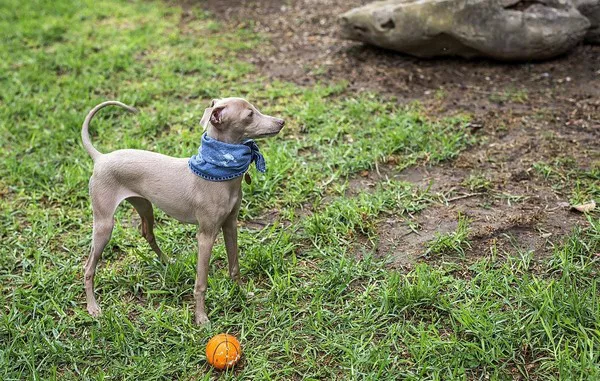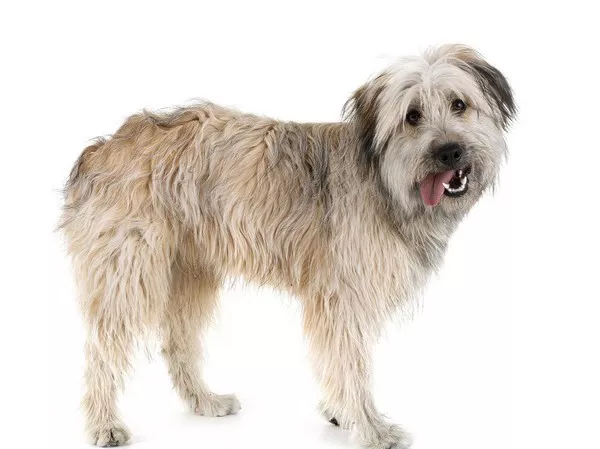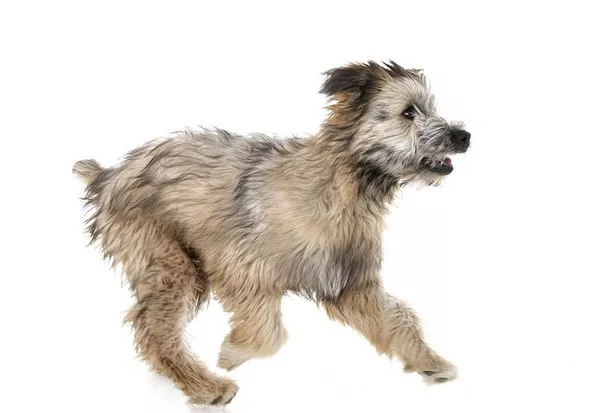The American Foxhound is a highly energetic and athletic breed originally bred for hunting purposes. Known for its endurance and speed, the breed’s physical characteristics are finely tuned for the work it was bred to do. One of the key aspects of maintaining a healthy Foxhound is ensuring it is the correct weight for its age, gender, and activity level. In this article, we will explore how much an American Foxhound should weigh, the factors influencing their weight, how to assess their body condition, and tips for maintaining an ideal weight.
1. Introduction to the American Foxhound
The American Foxhound is a large, strong, and energetic breed that was originally developed in the United States in the 18th century to hunt foxes. The breed’s stamina, speed, and keen sense of smell made it an excellent hunting companion. Today, they are often kept as family pets or participate in various dog sports, but they retain their hunting instincts and high activity levels.
Typically, the American Foxhound is lean and muscular with a graceful build. It stands about 21 to 25 inches tall at the shoulder and weighs between 40 and 65 pounds. This range, however, can vary based on several factors such as genetics, sex, activity level, and overall health.
Understanding the ideal weight for an American Foxhound is crucial for maintaining their health and longevity. Let’s dive deeper into the factors that influence their weight and how to keep them in peak condition.
2. What Is the Ideal Weight Range for an American Foxhound?
The American Foxhound’s weight typically falls between 40 and 65 pounds, but within that range, there can be some variation depending on factors such as gender and overall build. Here’s a general breakdown of the expected weight for different types of Foxhounds:
Male American Foxhound
Weight: 50 to 65 pounds
Males are generally larger and more muscular than females. They have a slightly broader chest and thicker neck, which contribute to their higher weight range.
Female American Foxhound
Weight: 40 to 55 pounds
Females are typically smaller and more compact, though they still maintain the same athletic build as their male counterparts. Their weight tends to be on the lower end of the scale compared to males.
This weight range is just a guideline, as some Foxhounds might fall outside these ranges, particularly in rare cases where a dog is either exceptionally large or smaller due to genetic variation. However, most healthy American Foxhounds will weigh within this range and exhibit the right body condition.
3. Factors Influencing Weight in American Foxhounds
Several factors can influence the weight of an American Foxhound. These include genetics, diet, exercise, age, and health conditions. Let’s break down these factors to understand how each one affects your dog’s weight.
Genetics
Like all breeds, genetics play a major role in the size and weight of an American Foxhound. Some Foxhounds may naturally be on the larger or smaller side based on the genetic pool they come from. Breeding standards also influence the size of the breed, so it’s possible to have a Foxhound that is slightly heavier or lighter than the average weight range.
Diet and Nutrition
The type of food your Foxhound eats can have a direct impact on their weight. Proper nutrition is vital to maintaining a healthy body weight, especially since American Foxhounds are very active dogs. It is essential to feed them a balanced diet with adequate protein, fat, and carbohydrates to support their high energy levels.
Overfeeding can lead to weight gain, which can result in obesity, while underfeeding can lead to malnutrition, which can stifle their energy and overall well-being. It’s also important to choose a high-quality dog food that is appropriate for their life stage (puppy, adult, or senior) and level of activity.
Exercise and Activity Levels
As a breed, American Foxhounds are highly active dogs that require a lot of exercise. If they do not get enough physical activity, they can become overweight. Conversely, if they get too much exercise without proper nutrition or recovery, they may burn too many calories, causing them to lose weight or develop muscle mass at the expense of fat.
Hunting dogs, like the American Foxhound, are bred to have a high level of stamina and endurance. Therefore, it’s important to provide them with regular and intense physical activity, including long walks, runs, and play sessions.
Age
A Foxhound’s weight can vary as they age. Puppies, for example, will gain weight as they grow, reaching their full adult size by around 18 months to 2 years of age. During this time, they will go through growth spurts, and their weight will fluctuate as they develop muscle mass.
As American Foxhounds age into their senior years (around 7 years and older), their metabolism may slow down, and they may become less active. As a result, they may need fewer calories, and it becomes important to monitor their weight closely to prevent obesity.
Health Conditions
Certain health issues can cause weight fluctuations in an American Foxhound. For instance, thyroid imbalances, such as hypothyroidism, can lead to weight gain, while conditions like gastrointestinal diseases or diabetes can result in weight loss. Regular vet check-ups are important to detect any underlying health issues that could affect your dog’s weight.
4. How to Assess the Body Condition of an American Foxhound
While the weight of your Foxhound is an important indicator of health, it’s not the only factor to consider. It’s also crucial to assess their body condition, which takes into account both their weight and overall physique. The body condition score (BCS) is a system used by veterinarians to evaluate the ideal weight and health of an animal. It is a 9-point scale, where 1 is emaciated, 5 is ideal, and 9 is obese.
For an American Foxhound, an ideal body condition score is typically between 4 and 5. Here’s how you can evaluate your dog’s condition:
Ribs: You should be able to feel your Foxhound’s ribs easily without excess fat covering them. If you can’t feel their ribs, they may be overweight. If you can see their ribs too prominently, they may be underweight.
Waist: When viewed from above, your Foxhound should have a defined waist. There should be a slight tuck just before the hind legs. If the waist is not defined or if there is a large bulge, your Foxhound may be overweight.
Abdominal Tuck: From the side, you should see an abdominal tuck. This means the belly should be slightly raised from the chest to the hind legs. A lack of an abdominal tuck or sagging belly may indicate obesity.
Muscle Tone: American Foxhounds are muscular dogs, so you should be able to feel a good amount of muscle under their coat, especially in the chest, shoulders, and thighs.
5. Common Weight-Related Issues in American Foxhounds
Like many breeds, American Foxhounds are prone to certain weight-related health issues. These can arise due to improper diet, insufficient exercise, or underlying health conditions. Here are some common problems associated with weight in Foxhounds:
Obesity
Obesity is one of the most common health concerns for pet owners, and American Foxhounds are no exception. Obesity occurs when a dog consistently consumes more calories than they burn, leading to excess fat storage. This can have serious consequences on their health, including joint issues, diabetes, and heart disease.
Obesity in Foxhounds can be prevented by ensuring they receive an appropriate amount of high-quality food and regular exercise. If your Foxhound is gaining weight rapidly or seems lethargic, it’s a good idea to visit your veterinarian to rule out any underlying health issues.
Underweight
Being underweight is less common in American Foxhounds, but it can occur if a dog is not eating enough, is experiencing stress, or has a medical condition affecting their appetite or metabolism. Underweight Foxhounds will often appear bony or have little muscle mass. In severe cases, underweight dogs may experience stunted growth, lethargy, or weakness.
If you believe your Foxhound is underweight, it’s important to consult with a veterinarian to identify the underlying cause and develop a plan to help them gain weight healthily.
6. How to Maintain a Healthy Weight for Your American Foxhound
Maintaining an appropriate weight for your American Foxhound involves a combination of proper diet, regular exercise, and routine vet visits. Here are some tips to help you manage your dog’s weight:
Diet Management
Measure Food Portions: Avoid free-feeding your Foxhound, as this can lead to overeating. Instead, measure out their daily food portion according to the feeding instructions on the dog food package or as recommended by your veterinarian.
Choose High-Quality Food: Ensure that your Foxhound is eating a balanced diet appropriate for their age, size, and activity level. Look for high-quality dog food that contains animal-based proteins and appropriate fats.
Avoid Table Scraps and Treats: Human food and excess treats can lead to weight gain. Treats should make up no more than 10% of your dog’s daily caloric intake.
Exercise and Mental Stimulation
Provide Daily Exercise: American Foxhounds need at least 1 to 2 hours of exercise each day. This can include walking, running, playing fetch, or participating in dog sports. Foxhounds enjoy mental stimulation, so puzzle toys or scent games can also help keep them engaged.
Maintain Routine: Keep a consistent exercise schedule to help your Foxhound burn off calories effectively and maintain muscle tone.
Regular Vet Checkups
Routine vet checkups are important to monitor your Foxhound’s weight and overall health. Your vet can assess your dog’s weight, body condition, and overall health and provide guidance on maintaining an ideal weight.
Conclusion
Maintaining a healthy weight for your American Foxhound is vital to their well-being. By understanding the breed’s ideal weight range, monitoring their body condition, providing proper nutrition and exercise, and consulting with a veterinarian, you can help ensure your Foxhound stays healthy, happy, and active throughout their life. Regular care and attention to their weight will also prevent many of the health issues associated with being overweight or underweight, allowing your Foxhound to enjoy their long, active life as a loving companion.
Related Topics:





















